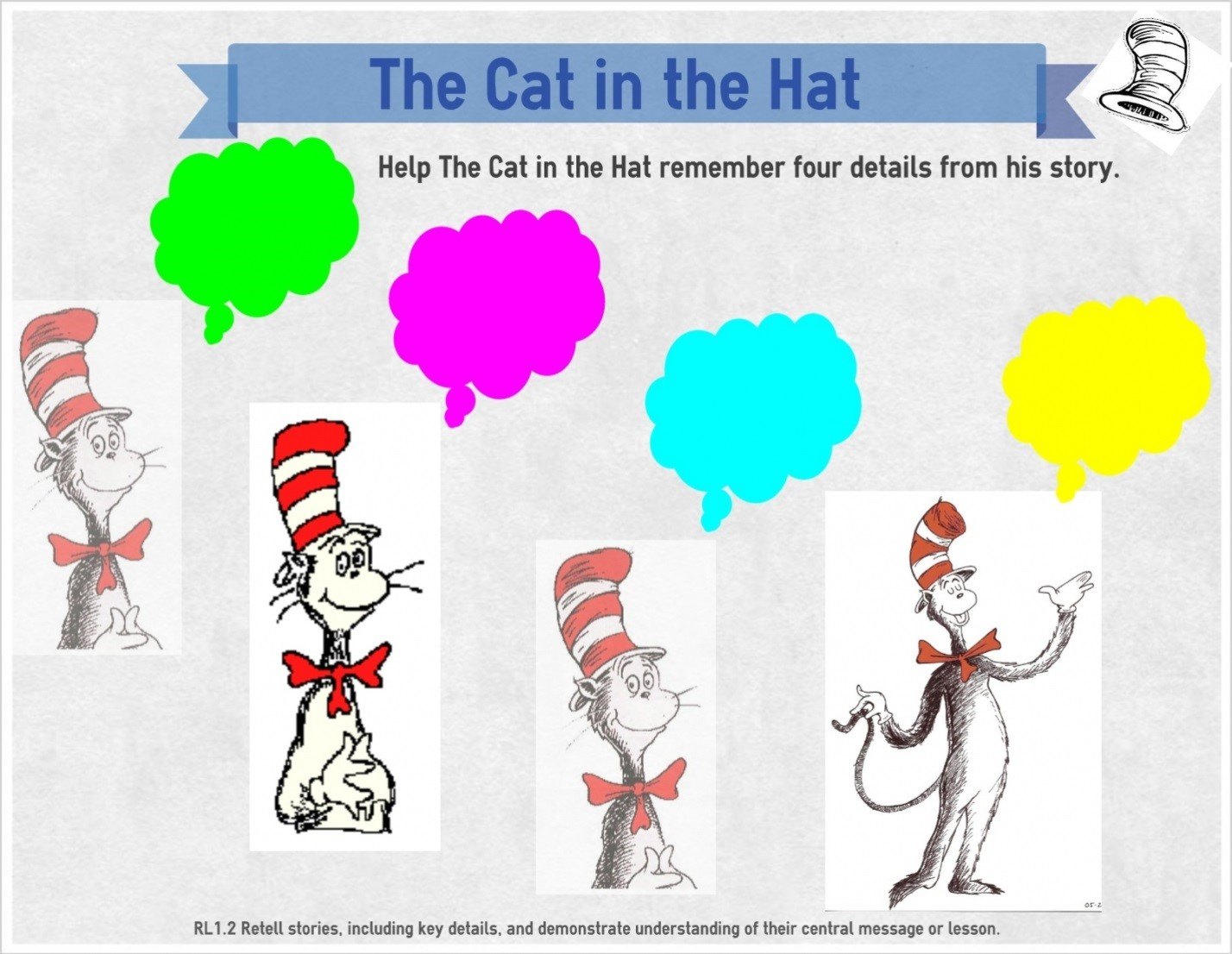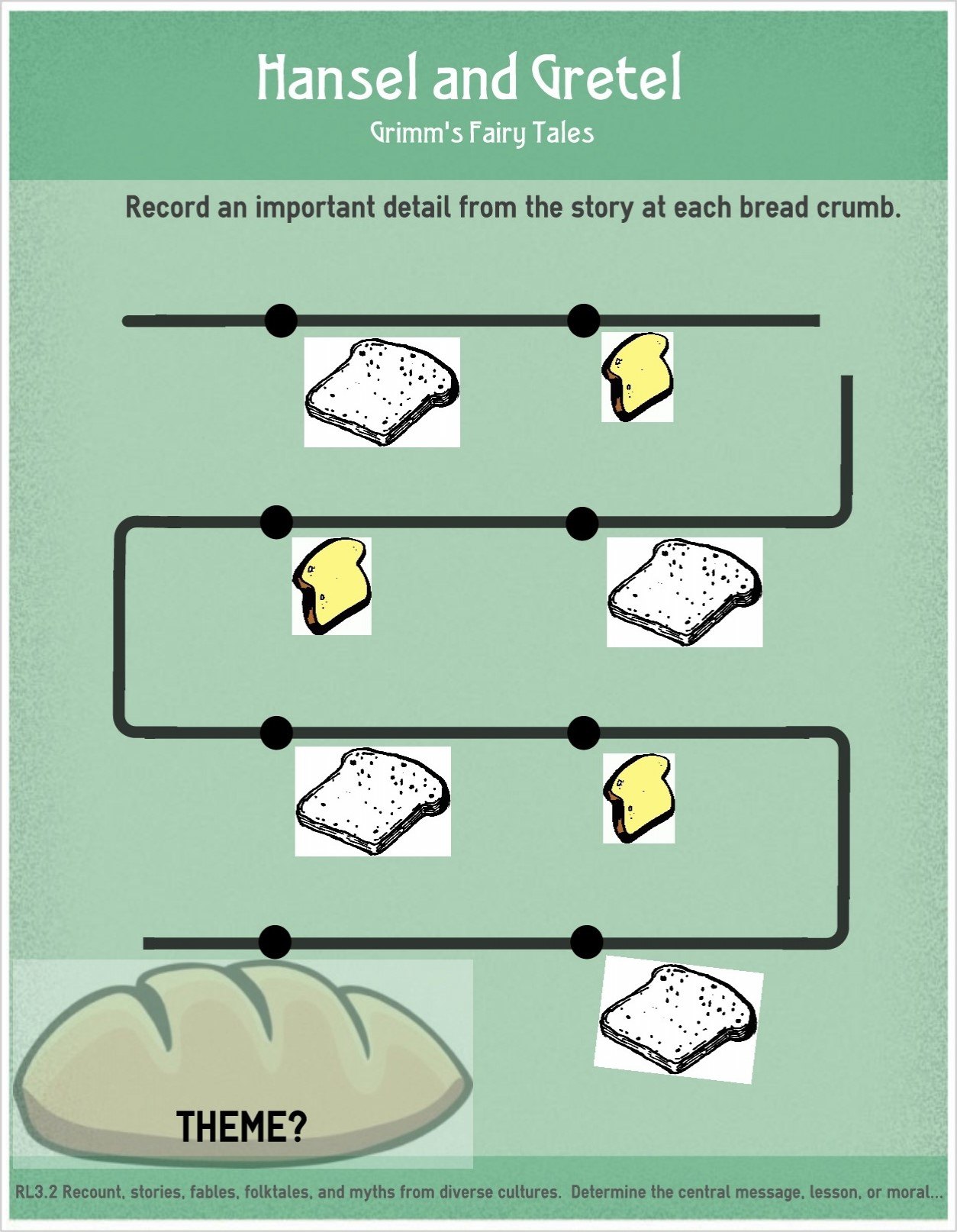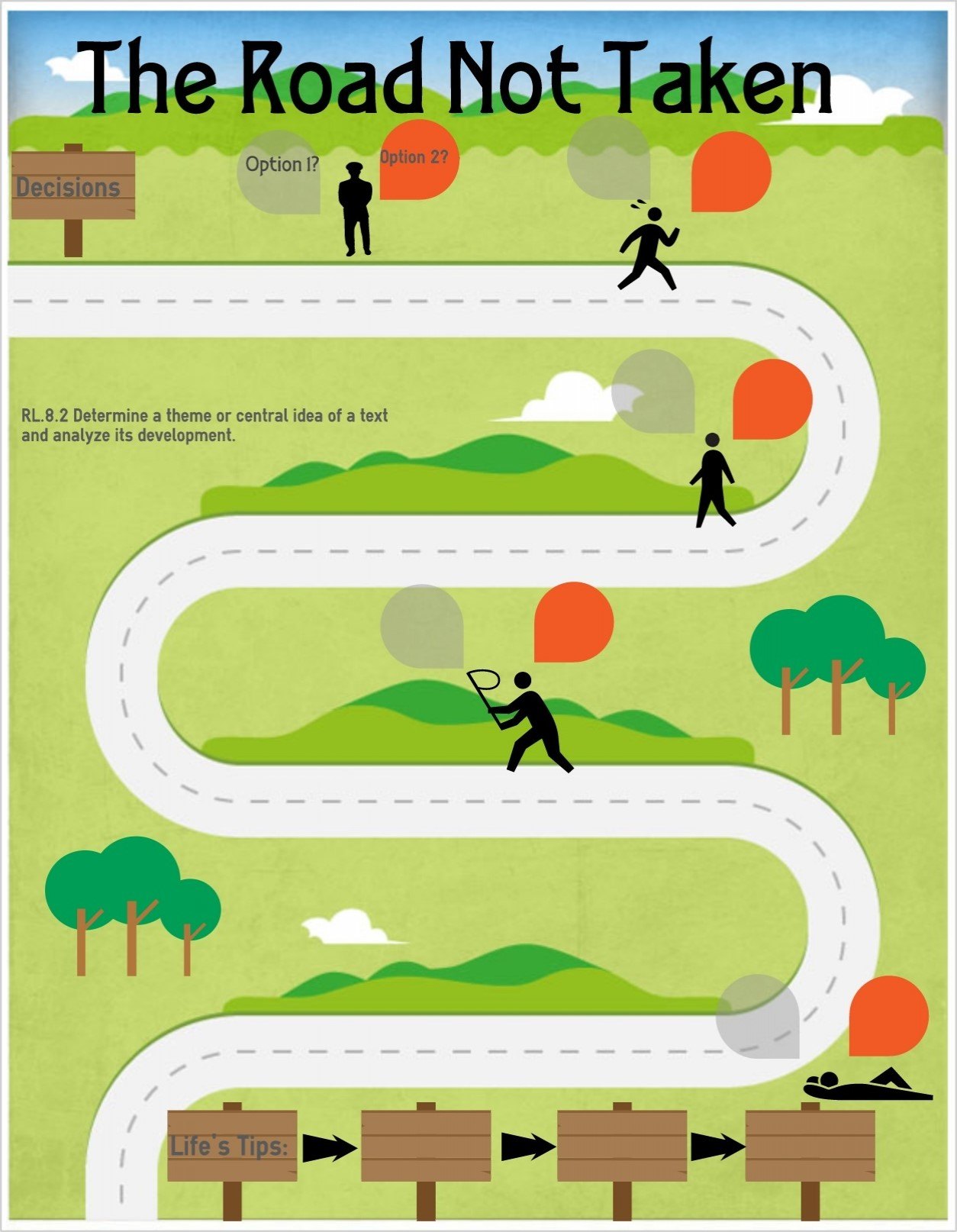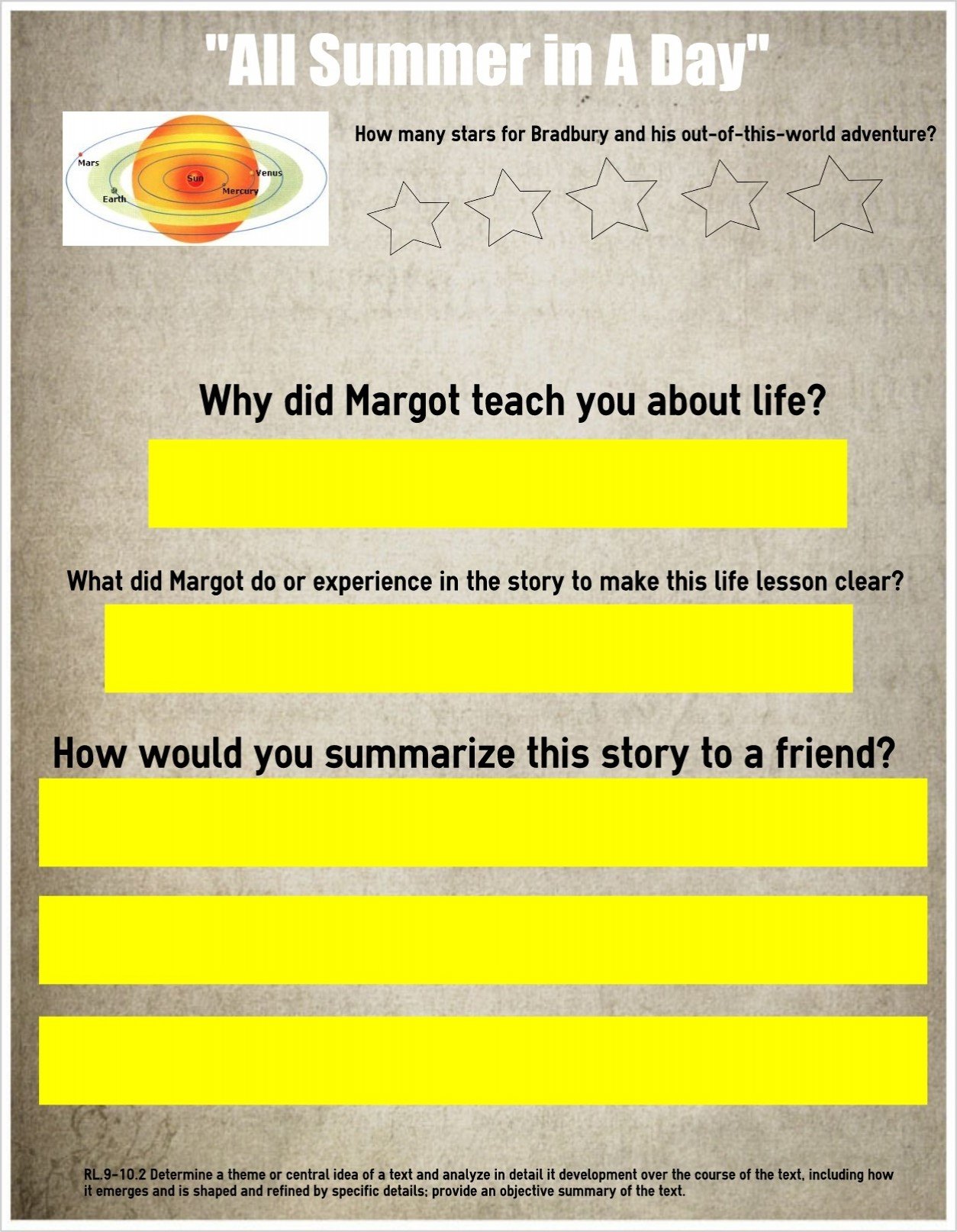Impressing students isn’t as easy as it once was. Today’s students are “digital natives” that grow up using tablets, cell phones, and technology devices to enrich their lives. My students are always excited when I find a way to bring technology into the language arts classroom. This week, I would like to spotlight how Easelly has allowed me to encourage my students through the use of technology while teaching the Reading Literature Standard 2.
Kindergarten – 2nd grade teachers:
As a quick review, let’s take a look at the Reading Literature Standard 1:
- CCSS.ELA-Literacy.RL.K.2 With prompting and support, retell familiar stories, including key details.
- CCSS.ELA-Literacy.RL.1.2 Retell stories, including key details, and demonstrate understanding of their central message or lesson.
- CCSS.ELA-Literacy.RL.2.2 Recount stories, including fables and folktales from diverse cultures, and determine their central message, lesson, or moral.
Retelling stories starts during the preschool years, as youngsters retell their favorite movie scenes or television shows. As part of the Reading Literature, Standard 2, Kindergarten through second grade students work to expand this storytelling skill, adding the concepts of life lessons and morals that are created from key details.
A well-known literature author that excites elementary students is Dr. Seuss. The Cat in the Hat is a fun story, rhyming book that explores the life lesson from the perspective of Sally and the narrator. Not happy about the rainy day, these characters are not very excited about their day indoors. Let’s take a closer look at how an infographics resource can help students to explore the language of Dr. Seuss in this classical book.
This attractive vheme will excite students, as they retell the story of The Cat in the Hat. Recalling four major details will provide a great discussion point. As students recall the details, each one can be recorded on the smartboard or individual copies can be made for students.
Other extension ideas related to this picture book:
- Create a vheme that compares the lessons or morals in three of Dr. Seuss’s picture books.
3rd – 5th grade teachers
As a quick review, let’s take a look at the Reading Literature Standard 1:
- CCSS.ELA-Literacy.RL.3.2 Recount stories, including fables, folktales, and myths from diverse cultures; determine the central message, lesson, or moral and explain how it is conveyed through key details in the text.
- CCSS.ELA-Literacy.RL.4.2 Determine a theme of a story, drama, or poem from details in the text; summarize the text.
- CCSS.ELA-Literacy.RL.5.2 Determine a theme of a story, drama, or poem from details in the text, including how characters in a story or drama respond to challenges or how the speaker in a poem reflects upon a topic; summarize the text.
Grimm’s Fairy Tales are a wonderful resource that allows teachers in grades 3 – 5 to explore the themes found within these wonderful texts. There is a rich cultural tradition found within these works that is sure to allow students to grow in their ability to determine themes, while summarizing the text. If you get excited about Hansel and Gretel as I do, you will be ready to put this Easel.ly created resource to work in your classroom!
Students can work together to re-create the details from Hansel and Gretel, filling in the path that leads to the loaf of bread at the end of the path. This finale allows students to think about the theme in this fairy tale.
Other extension ideas related to this informational passage include:
- Encourage students to create a vheme that compares and contrasts Hansel and Gretel to another fictional character.
6th – 8th grade teachers
With age comes increased responsibility – that’s what I tell my middle school students! In this case, simply identifying the theme in a fictional work is insufficient in mastering the Reading Literature Standard 2. Before looking at a classroom activity that combines technology vhemes and literature themes, let’s take a quick look at the language in this ELA Common Core standard:
- CCSS.ELA-Literacy.RL.6.2 Determine a theme or central idea of a text and how it is conveyed through particular details; provide a summary of the text distinct from personal opinions or judgments.
- CCSS.ELA-Literacy.RL.7.2 Determine a theme or central idea of a text and analyze its development over the course of the text; provide an objective summary of the text.
- CCSS.ELA-Literacy.RL.8.2 Determine a theme or central idea of a text and analyze its development over the course of the text, including its relationship to the characters, setting, and plot; provide an objective summary of the text.
It’s a path! No, it’s a road. Wait – it’s life. This might reflect the thought processes of someone reading Robert Frost’s poem, “The Road Not Taken”. This is a classical poem that has withstood the test of time. Now, it can be jazzed up with technology to withstand the interest levels of middle school students.
Students can think about life’s choices with the use of this vheme. As students reach each section along the path, they should fill in two related decisions that they might have to make. The first person might be trying to decide: do I go to my friend’s party or to the concert with my parents? Each set of speech bubbles requires students to think about decision-making, a common theme in Frost’s poem. At the bottom of the vheme are three blank road signs, students should use these to quote bits of advice from the poem. What details showed the narrator’s thought processes in making decisions?
Assign students to create a vheme that analyzes the poetic devices found in the poem.
9th – 12th grade teachers:
Literature is still an important area for high school students. Reading and reflecting on modern and classical texts across fictional domains will enhance a student’s ability to determine themes, analyze details, and understand how details combine to create a central idea.
- CCSS.ELA-Literacy.RL.9-10.2 Determine a theme or central idea of a text and analyze in detail its development over the course of the text, including how it emerges and is shaped and refined by specific details; provide an objective summary of the text.
- CCSS.ELA-Literacy.RL.11-12.2 Determine two or more themes or central ideas of a text and analyze their development over the course of the text, including how they interact and build on one another to produce a complex account; provide an objective summary of the text.
Students will appreciate the unpredictable weather conditions that constitute life in the U. S. after reading “All Summer in a Day” by Ray Bradbury. This science fiction short story explores life on a foreign planet with monsoon conditions and a key life lesson. Consider using the following vheme to promote deeper thinking from students about what is really being said within the pages of “All Summer in a Day”.
Other extension ideas related to this picture book:
- Have students create an infographic that compares Margot’s life to yours.
Conclusion
The CCSS ELA Reading Literature Standard 2 activities are ready and waiting to make their way into your classroom! With the ability to complete uploads from your own graphics, the ability to create creative, engaging handouts and resources is virtually at your fingertips. Join us next week for more examples of how Easel.ly is correlating with the CCSS ELA Standards to enrich classroom instruction, as we take a look at Reading Information Standard 2.



